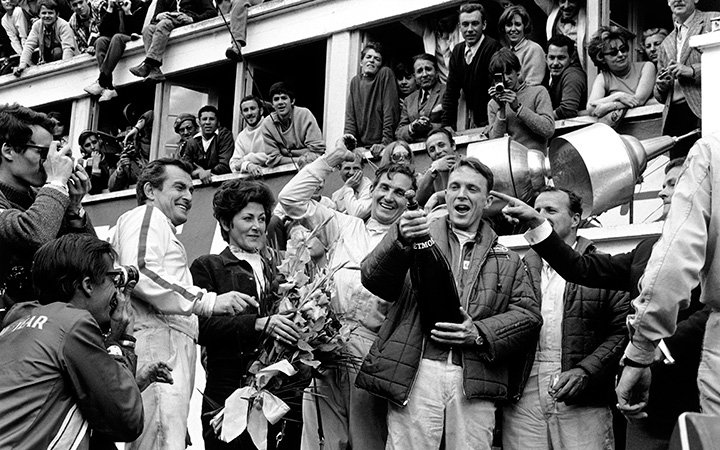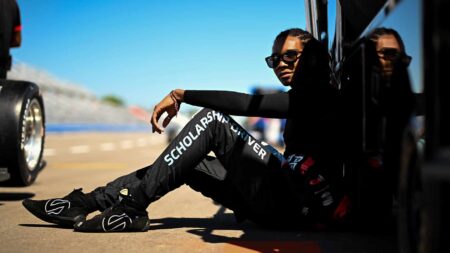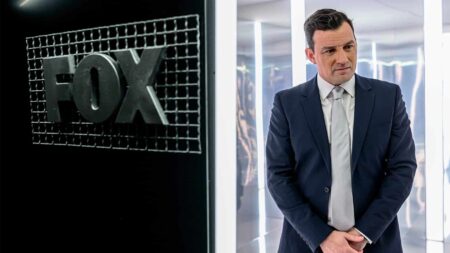
Lundgaard: McLaren can make history with F1/IndyCar double win
Christian Lundgaard is McLaren's new IndyCar star – and wants to make history by helping the team win both in F1 at Bahrain and at Long Beach Stateside on the same day

On Wednesday of this week the Henry Ford Museum in Dearborn, Michigan will present Dan Gurney with the Edison-Ford Medal in recognition of “his ingenuity and innovative achievements in racing and beyond”. Gurney scored many memorable wins in a variety of categories aboard Ford-powered cars and established himself not only as one of the sport’s most versatile drivers but also as a remarkably innovative car builder and team owner with a long line of successful Eagle Formula 1, Indy and IMSA GTP cars.
As a driver, Gurney played a big role in Ford’s racing history during the ‘60s. His most renowned victory for Ford came at Le Mans in 1967 when Dan and AJ Foyt drove a factory Ford MkIV to the American company’s second win in a row at La Sarthe.
Gurney’s other big wins for Ford include the following: Ford’s only win in the original, unlimited Can-Am series, driving a Ford V8-powered All American Racers Lola T70 to victory at Bridgehampton in 1966; five wins in six years from 1963-68 in NASCAR’s season-opening 500-mile road race at Riverside aboard Wood Brothers and Holman & Moody Ford stock cars; and all seven of his USAC Indycar wins aboard Weslake/Ford-powered AAR Eagles.
He was also the driving force in bringing Ford together with Colin Chapman to produce the Lotus 29, 34 and 38 Indycars, resulting in Jim Clark’s historic first Indy 500 win for a rear-engined car aboard the type 38 in 1965.
Gurney made his first start at Indianapolis in 1962. At the time he was racing F1 cars for Porsche and scored Porsche’s only F1 win in that year’s French GP. At Indianapolis, he drove the only rear-engine car in the field, Mickey Thompson’s Buick stock-block-powered car designed by John Crosthwaite. None of the established drivers had any interest in trying Thompson’s car, but Dan was quite impressed.
“With a reliable engine and no more power than the Buick had, if it had run properly I bet we could have won the race,” Dan says. “It was that good. We had a lot of fun and surprised some people with that car. In my opinion, the car design was as good as anything that was out there.”

Photo: Ray Crosthwaite
He qualified eighth and ran with the leaders until the transmission failed, but the experience convinced him rear engines were the way to go at Indianapolis just as they were in F1. Most Indy experts believed Jack Brabham’s run to ninth place in the 1961 Indy 500 with a Cooper Formula 1 car fitted with a stretched 2.6 litre four-cylinder Coventry-Climax engine was an insignificant event. They thought rear-engined cars were too flimsy for Indianapolis and oval racing in general but Dan disagreed. “There was no doubt that the rear-engine concept was going to happen sooner or later at Indianapolis,” he observed. “It was just a question of time.”
Gurney decided the best candidate for the job of designing and building a rear-engined Ford-powered Indycar to tackle the USAC establishment was Lotus boss Colin Chapman. Consequently, Dan invited Chapman to watch the 1962 Indy 500 and brought him a London-to-Indianapolis round trip ticket. “I invited Colin Chapman to come to Indianapolis because I knew he could take a Cooper and make it lighter,” Gurney said. “He had the ability to envisage and implement the transition from space frame to monocoque chassis.”
Dan believed Chapman possessed all the right ingredients to achieve ground-breaking change at Indianapolis. “You had to have an inquisitive mind like Colin had. His mind was always going a mile a minute and he had an infectious presence. He was a leader and had followers who believed in him, and that included drivers. He was human. He made one mistake after another but for a period of many years he was the most prolific designer. You never knew when he would make another cataclysmic breakthrough.
“I could see the Lotus cars had the ability to go quickly because they were light, they were slippery, and the basic building blocks were good. The way Chapman knitted them together was a step up on the other guys. I watched from a distance as I was driving for Ferrari, then BRM, then Porsche. Lotus had progressed and continued to evolve more rapidly than the other guys and pretty soon they had some pretty damn good cars. They were light, maybe too light, definitely fragile, but clean and aerodynamically pretty darn good.”
On successive weekends in mid-summer Gurney won the French GP at Rouen and the non-championship Solitude GP in Germany driving a flat-eight Porsche F1 car and the following weekend Dan and Chapman were in Detroit to visit the Ford Motor Company.
“We had an audience with three key Ford guys, Bill Innis, Bill Gay and Don Frey. Chapman explained what he thought of the current state of Indycar design. He essentially convinced them that there was a chance that in his estimation with only 350hp Ford could have a car that could win the Indy 500. They had a 289ci rocker arm V8 engine and they said they thought they could make that much power, and Chapman thought he could make the car to utilise that engine.”
But Ford’s buttoned-down executives weren’t impressed with the supremely confident Chapman. They thought him arrogant and contemptuous of American ways but they were swayed by Dan’s forthrightness as well as his charm and amiability. Dan’s superstar status, broad grin and all-American appeal sold them on Chapman’s ideas and the wheels were set into motion for one of the biggest revolutions in the history of American racing.
“They thought about it a while and then got into talking money,” Dan says. “They bought into it. The first meeting was positive towards saying yes, we could do this. There were maybe three more meetings within three months and it was underway. We were going to Indy next year.”
And so it began. Gurney joined Jim Clark in factory Lotus entries at Indianapolis in 1963 and ’64, then ran his own AAR Lotus 38 in ’65. Clark scored his momentous win in ’65 while Ford’s GT40 MkII and MkIV won at Le Mans in 1966 and ’67 with Dan as a key component in the ’67 victory. And he also won races for Ford during this time in the Can-Am, Indycars and NASCAR.
Gurney’s role in Ford’s tremendous run of racing successes through the ‘60s cannot be underestimated and when you look at his entire career as a driver, car builder and team owner it’s clear that he’s the most deserving recipient possible of the Edison-Ford Medal. We congratulate Dan on one of the greatest careers in motor racing history.

Christian Lundgaard is McLaren's new IndyCar star – and wants to make history by helping the team win both in F1 at Bahrain and at Long Beach Stateside on the same day

Louis Foster starts his IndyCar journey this weekend in St Petersburg – can he emulate other British heroes like Nigel Mansell and Dan Wheldon?

Myles Rowe has rocketed through IndyCar's junior ladder with a story like no other – he tells James Elson why this upcoming year is more important than ever

Drive to Survive star Will Buxton has made the jump across the Atlantic to front Fox's new IndyCar coverage – he explained to James Elson why he thinks the championship is the most exciting series out there